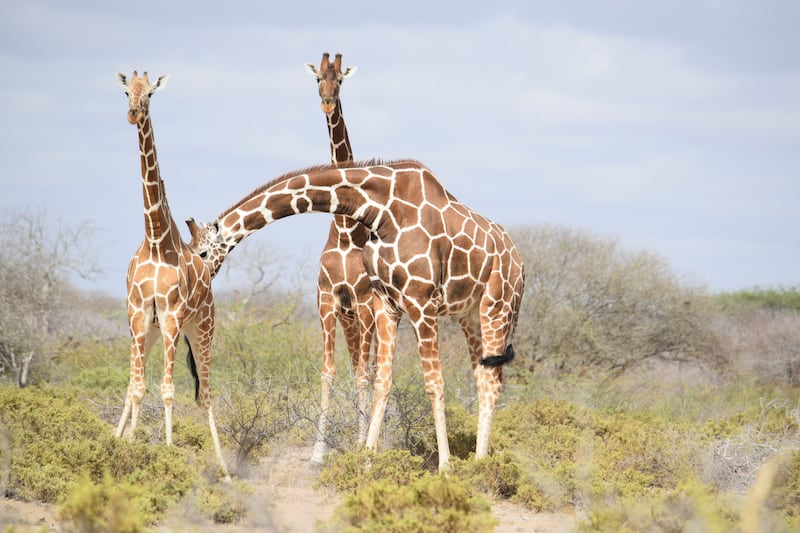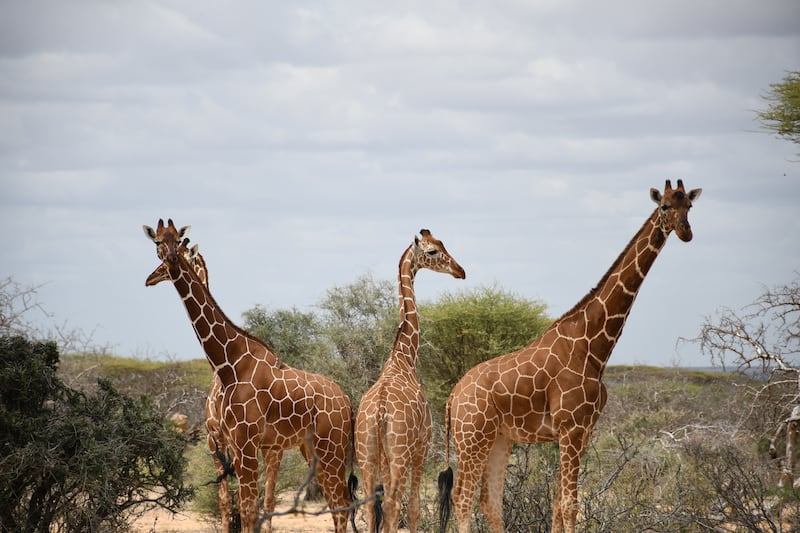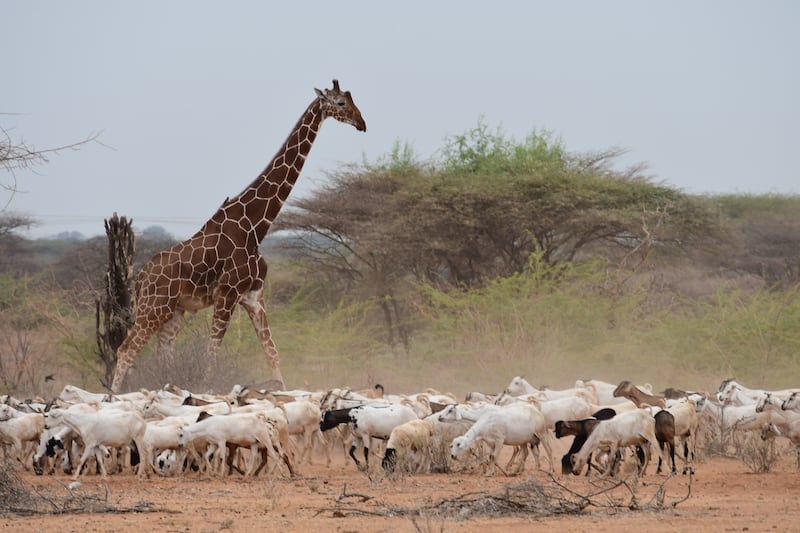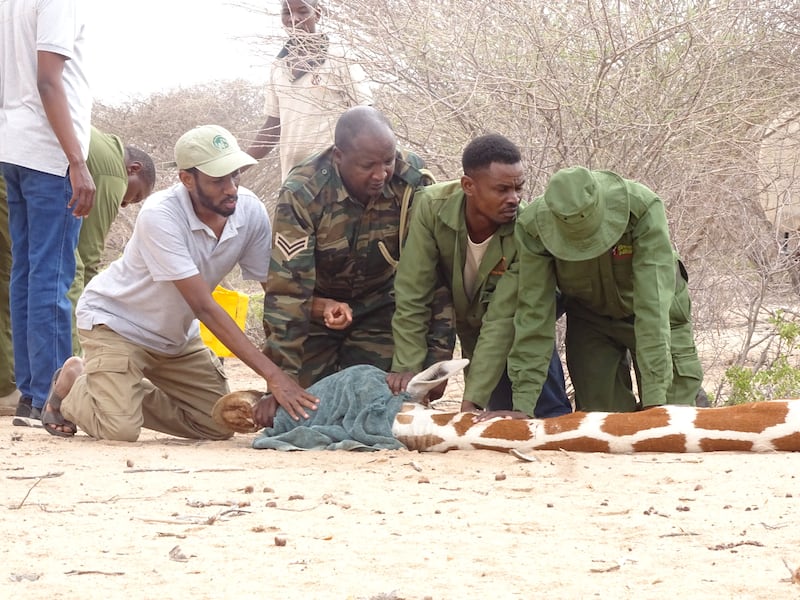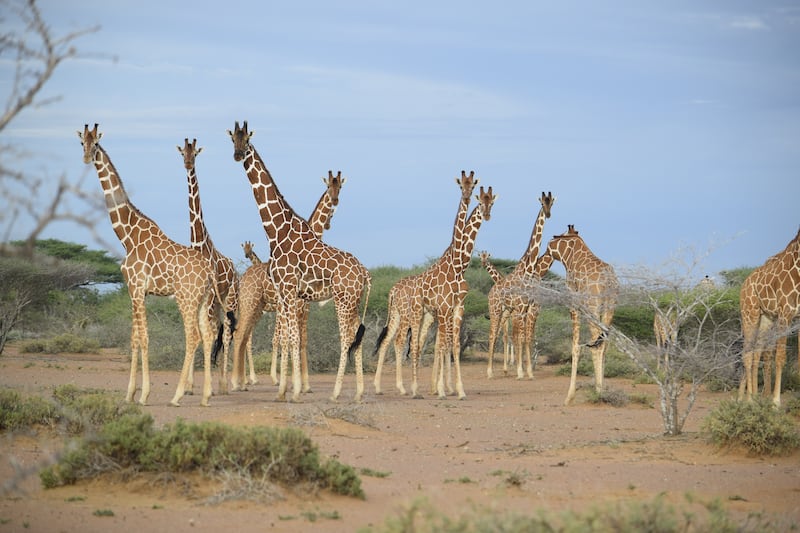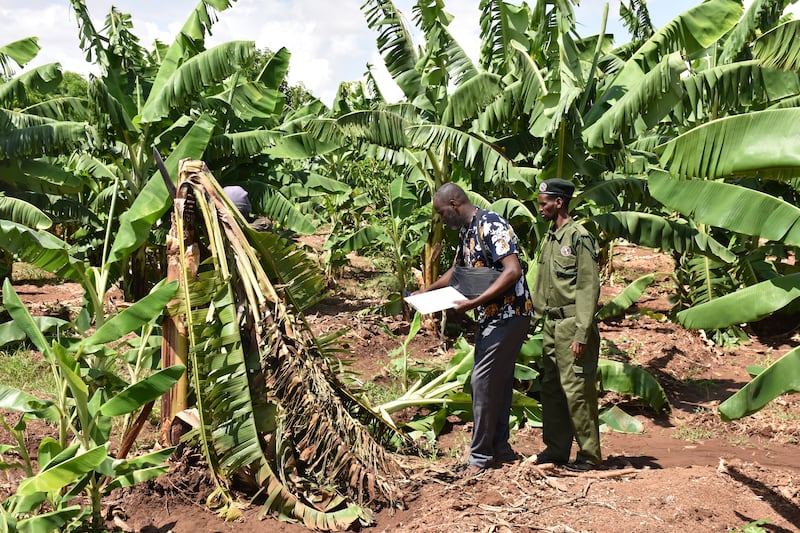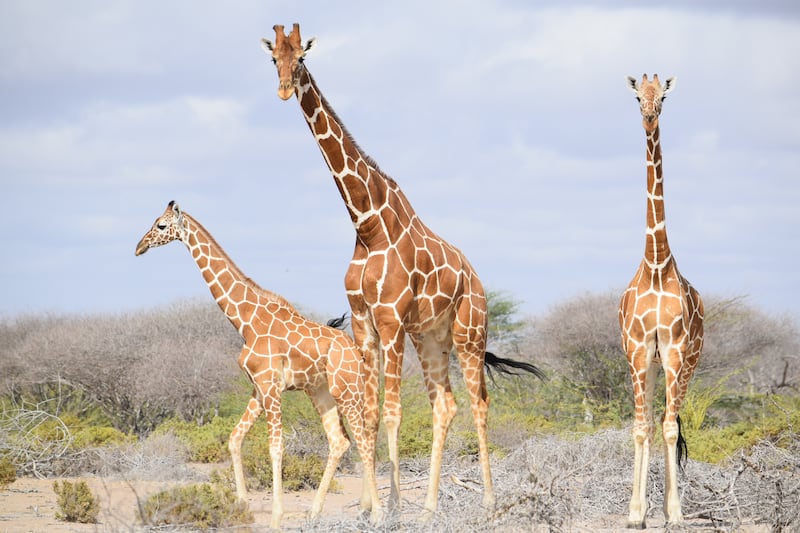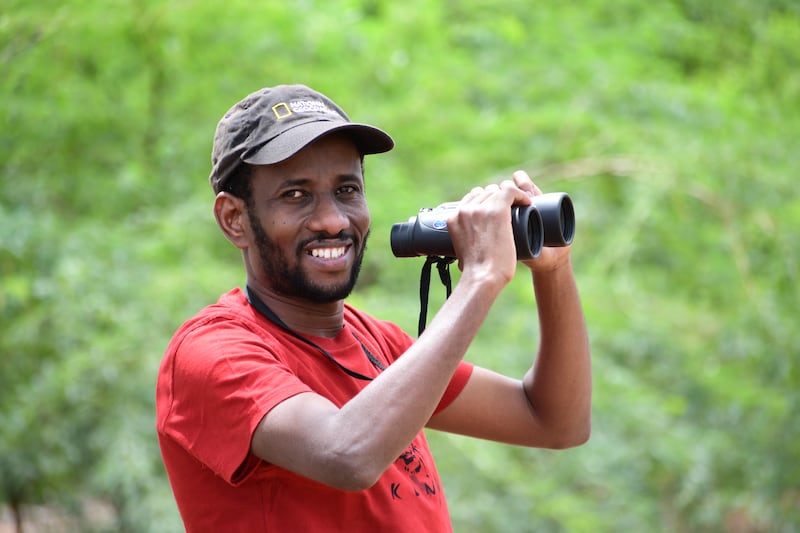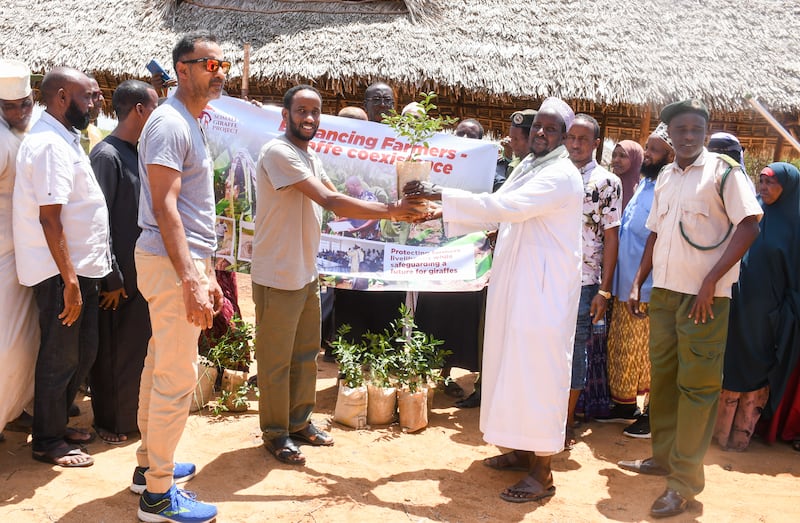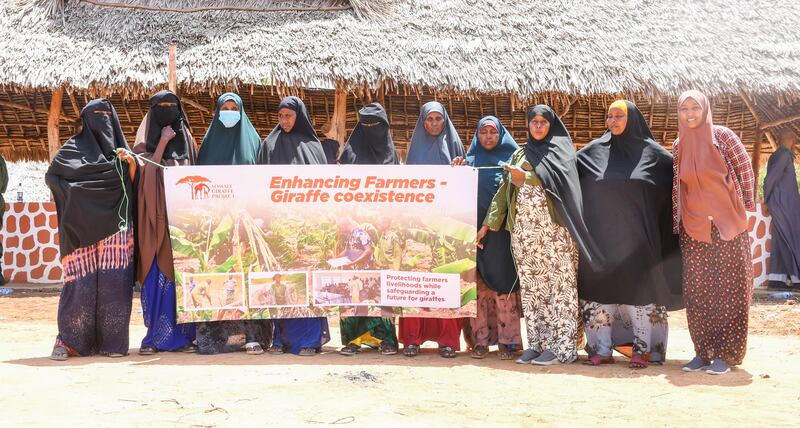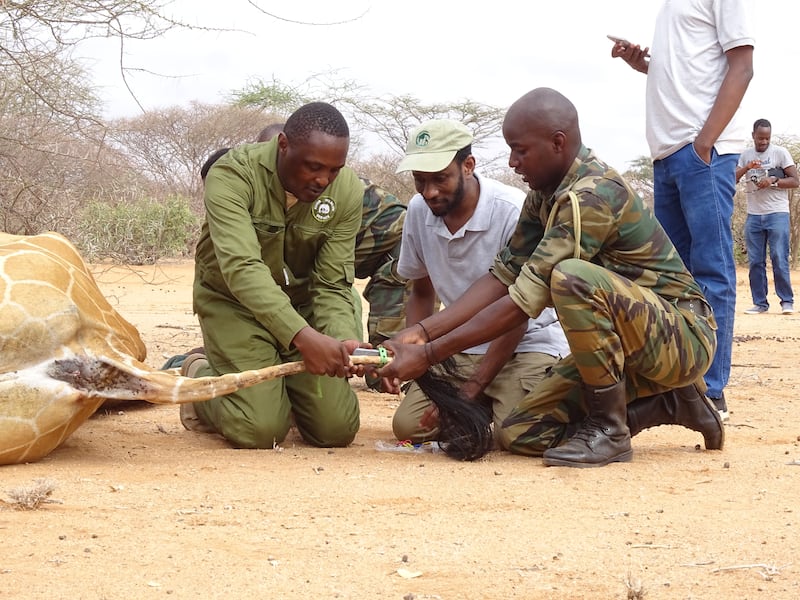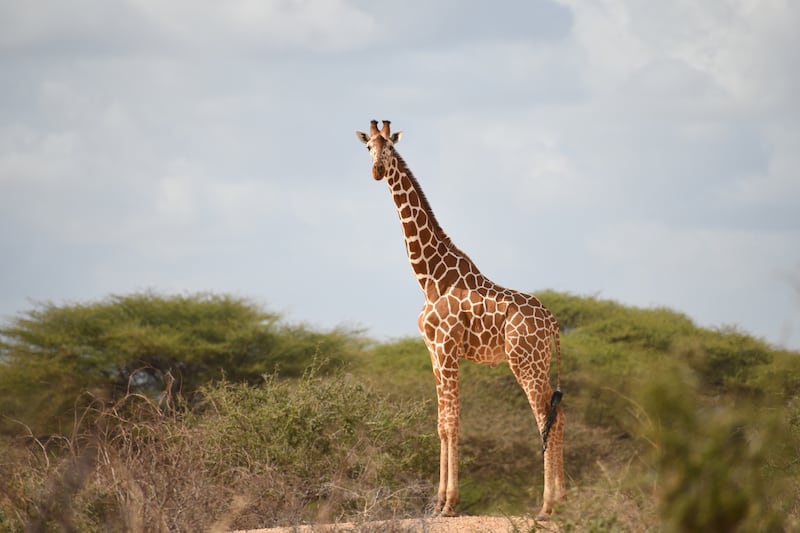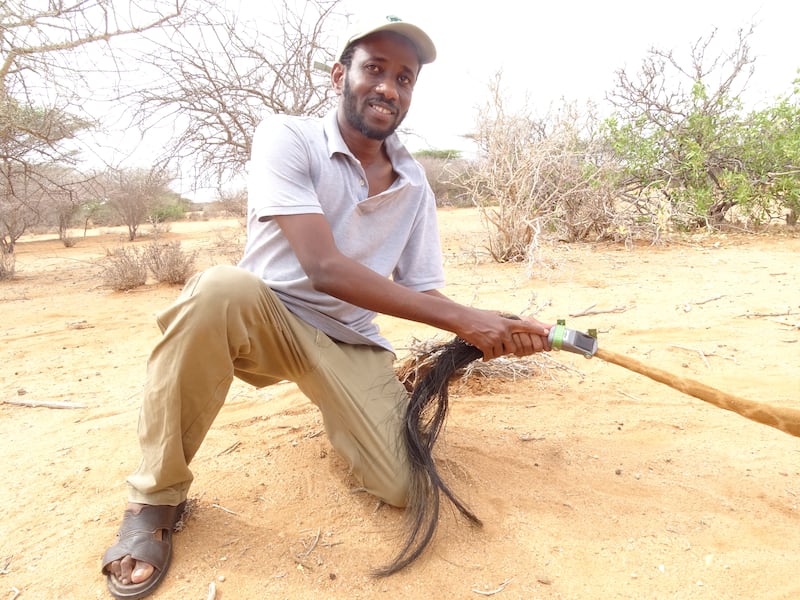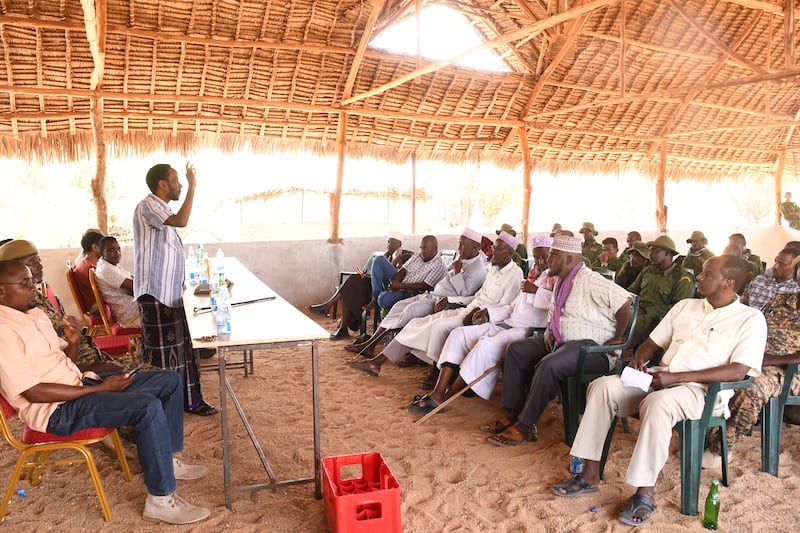A UAE-backed conservation campaign in Africa is offering a vital lifeline to under-threat giraffes facing a "silent extinction".
The reticulated giraffe – much like the species as a whole – is experiencing a decline in numbers, fuelled by habitat loss, poaching and climate change.
The Mohamed bin Zayed Species Conservation Fund is helping the Somali Giraffe Project, which operates in north-eastern Kenya, a largely ethnically Somali region, to safeguard these gentle giants.
Dr Abdullahi Ali, the founder of the project, said that a lot of effort had been made in Africa into conserving elephants, but that giraffe numbers were much lower in the wild and declining.
"Giraffes have been facing a silent extinction – no one has been talking about them. Particularly the Somali giraffes are endangered," he said.
"They’re facing a lot of threats ranging from habitat loss to poaching, the cross-border bushmeat trade and climate change. Their range is mostly north-eastern Kenya, a volatile region [that] lacks government protected areas."
More intense droughts, blamed on climate change, have forced formerly nomadic people in the region to settle in riverside areas in recent decades, which has limited the giraffes’ access to water.
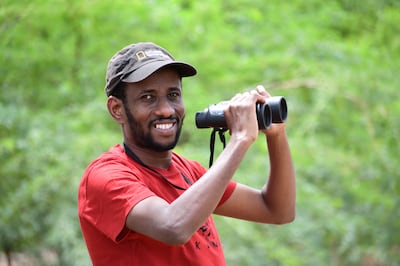
Addressing human-animal conflict
A lack of acacia trees, the giraffes’ natural food source, is another reason why the animals have been straying on to farms, where they may damage mango crops, sometimes destroying several years’ worth of cultivation.
"The farmers retaliate by attacking the giraffes with snares or even killing them," Dr Ali said. "There’s been very prominent hostility between the giraffes and farmers."
The reticulated giraffe, a subspecies of giraffe native to the Horn of Africa region, is classified by the International Union for Conservation of Nature (IUCN) as endangered. The IUCN’s database indicates that there are about 11,000 adults remaining and that numbers are declining.
Dr Ali’s project, which received a $15,000 grant from the Mohamed bin Zayed Species Conservation Fund, has developed initiatives that have meant the interests of giraffes and people need not be in conflict.
Central to this has been encouraging farmers to grow limes, instead of mangoes, because these are not damaged by giraffes. Farmers have been put in touch with buyers of the fruit in Nairobi, the Kenyan capital.
"They get a better price. We eliminate the middlemen. That improves the relationship between the farmers [and giraffes]," he said.
About 20 farmers have been involved so far, but the aim is to increase this to as many as 2,000 by 2025.
Other work includes tagging giraffes, which, by giving insight into their movements at different times of the year, helps the conservation work.
Maps showing the movement of tagged animals indicate how they move farther away from river areas outside the dry season.
The group also works with schools and encourages the planting of indigenous acacia trees, which are a favourite food of the giraffes.
Helping giraffes to thrive
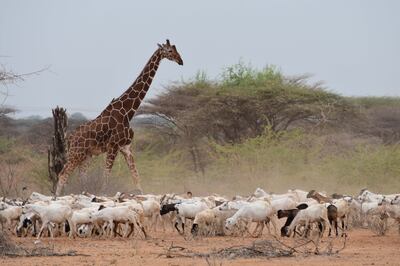
Human-wildlife conflict is a frequent problem in the conservation of wild animals, but Dr Ali said people more often spoke about tensions between people and elephants, not people and giraffes.
"A lot of people don’t appreciate that giraffes can become a problem animal. A lot of people know giraffes as gentle giants," he said.
Dr Ali said that giraffe numbers were declining across Africa and there were only about a quarter as many giraffes as elephants. Overall, he said, about 120,000 giraffes remained in the wild.
"For me to attract that grant … for conservation work for a species that we share a home with, is something significant and it’s inspiring a lot of people in the region to see a local scientist [developing] home-grown solutions to save species on the brink of extinction," Dr Ali said.
"The long-term goal is to have a thriving giraffe population and sustained livelihoods. The grant will help us with that ambition."
Key conservation mission
The Mohamed bin Zayed Species Conservation Fund was founded in 2009 by President Sheikh Mohamed – when he was Crown Prince of Abu Dhabi – with an initial endowment of $25 million (Dh91.82m), and awarded its first grants in 2010.
More than 2,000 grants have been made to help conserve animals, plants and fungi, with a maximum of $25,000 awarded per grant.
While grants are focused on conserving particular species, they typically have wider benefits for local communities and ecosystems too.
“From the perspective of a funder it is always important that a project addresses the risks an endangered species faces," said Nicolas Heard, acting director general of the Mohamed bin Zayed Species Conservation Fund.
"These can be very varied, but would usually require local, hands-on conservation actions and, more often than not, the engagement of local communities that interact with the species and their habitat."
Mr Heard said that where there was "conflict over shared resources – such as access to water", the project led by Dr Ali aimed to improve the coexistence of people and giraffes.
"Dr Ali intends to reduce the threat to the giraffes from this conflict by working with the local communities to increase their understanding of the needs of the giraffes, and to improve their own livelihoods in harmony with wildlife," he said.

